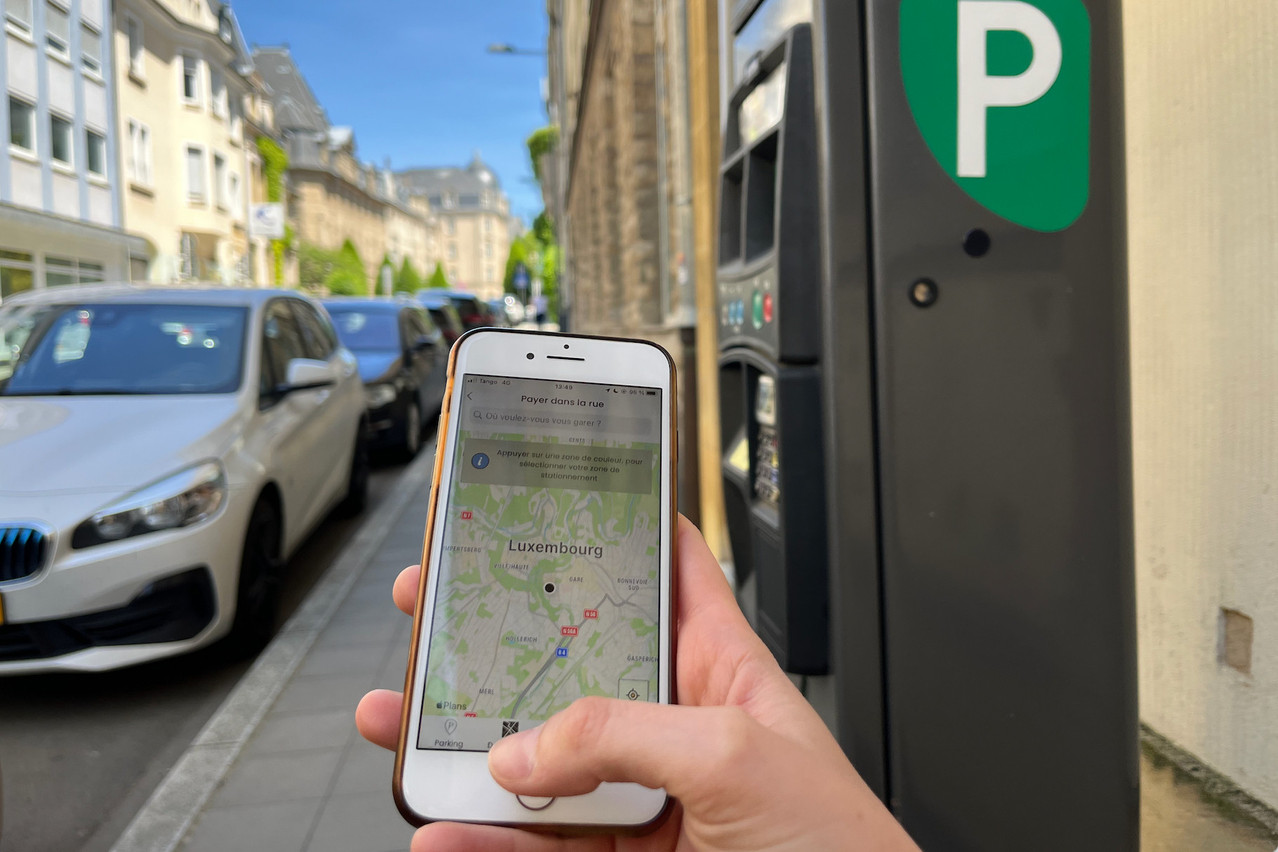From , there will be no need to look for change or even get out of your car to collect a ticket from a parking meter. The city of Luxembourg is launching the Indigo Neo application, which allows you to pay for parking with your smartphone.
How does it work?
First, you need to download the Indigo Neo application, available and . You can register in advance by entering your vehicle, payment method and billing address, or you can register directly at the station. All you have to do is open the application and click on the area of the map corresponding to the place where you are parked (which the phone locates itself using geolocation). Then “select a length of stay, then confirm and pay,” summarises the city of Luxembourg on its . “If you take a ticket for two hours, but leave after 1.5 hours, you can indicate this,” and therefore only pay for the parking time actually used, explains (DP), the alderman responsible for mobility. On the other hand, you can remotely extend your parking time if you are late. There is no ban on this.
Another option is to recognise the number plate in eligible car parks equipped with a barrier. You then need to activate “access on demand” on the application. The barrier opens automatically at the entrance and payment is made automatically at the exit.
In which car parks?
Initially, the application will only include outdoor parking spaces and the Fort Neipperg car park. Outdoor car parks with a barrier at the entrance, which is only used to count the number of cars, but which are part of the , such as the Glacis, are also covered. However, this is not the case for car parks with a barrier where a ticket is taken on arrival.
This represents a total of 35,000 spaces covered by the application. According to the ministry of mobility, the , i.e., 177,922 spaces if we multiply this figure by 132,778 (the number of inhabitants in 2022 in Luxembourg City).
Eventually, the capital would like to equip all its car parks: “We need to see how compatible they are with the various operators,” explains Goldschmidt. He also foresees a system for reserving spaces in advance in certain car parks, as part of a “smart city” approach.
What does Indigo Neo change compared with Call2park, which it replaces?
“With Call2park, we used to send an initial text message on arrival, which cost 50 cents, and then another at the end,” explains Goldschmidt. In other words, one euro was added to the cost of parking, “which did not go to the city, but to the telephone operator.” Indigo Neo, on the other hand, represents no additional cost for the user.
And “Call2park didn’t work everywhere.” Only 6,200 parking spaces were covered by this application.
How do council staff know that I have paid for my parking via the app?
“Indigo Neo is integrated directly into the traffic control system of the city’s parking enforcement officers,” explains the city’s website. “Using a license plate number, these municipal officers can check if a car’s owner has launched a parking session in the app.”
What if my company pays for my professional parking?
There are two possible options: pay with the company card, or retrieve the invoice from the “expenses” tab under “my account.”
How much does Indigo Neo cost the city?
Indigo takes a commission on transactions for a “very small percentage, more or less equal to that of bank cards,” replies Goldschmidt. The city also pays the company an “annual licence fee” of €3,600, in addition to €5,850 for commissioning.
What if I don’t have a smartphone, Internet, or I’m out of battery? What if I don’t want to download the application?
Don’t worry, parking meters will continue to exist alongside the application.
This story was first published in French on . It has been translated and edited for Delano.
